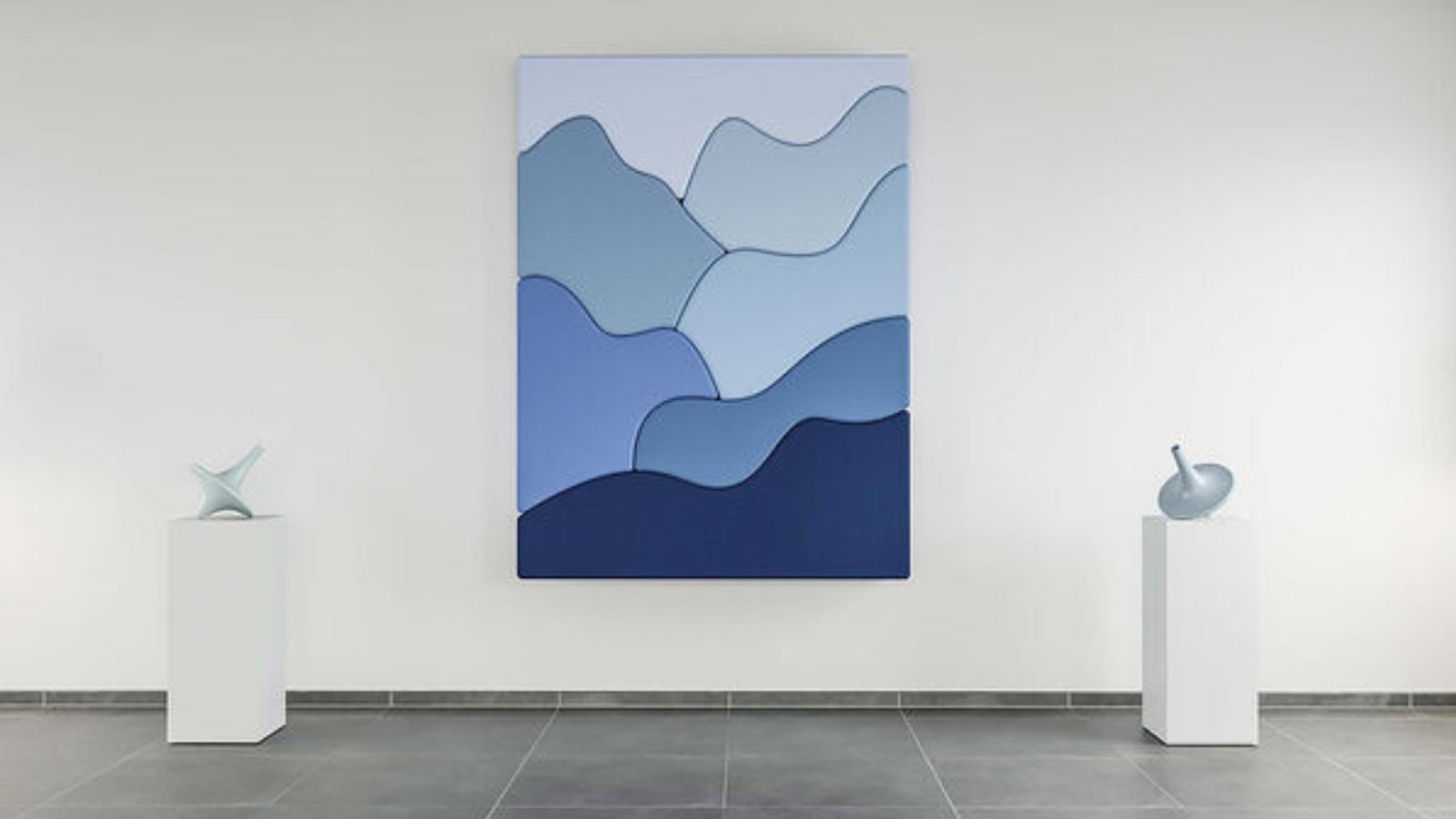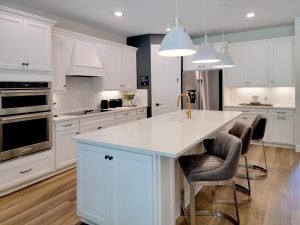Get the week's most popular posts delivered to your inbox.
Our weekly update is free yet priceless and you're less than a minute away from getting the current edition.
In the unlikely event we disappoint, you can unsubscribe with a single click!
Last Updated on October 30, 2025 by teamobn
I’ve always found that modular furniture makes compact living both stylish and functional. These adaptable pieces let me transform a single room into a living area, dining spot, and home office with ease. By choosing clever designs, I maximize every inch without sacrificing comfort or aesthetics. In this guide, I share my favorite modular solutions and styling tips for small homes and work-from-home setups.
Contents
- 1 Modular Furniture Innovations (2024–2025)
- 1.1 Ori Expandable Apartment Systems (Ori)
- 1.2 Loopo Modular Furniture System (Bujnie)
- 1.3 Sisto Multi-Function Furnishing (Edoardo Lietti)
- 1.4 Summit Magnetic Modular Sofa (Mousarris)
- 1.5 Bloom Block Modular Paper Furniture (Yerin Jung)
- 1.6 USM Haller x Buchanan Studio Collaboration
- 1.7 Hexagon Modular Desks
- 1.8 Tech-Integrated Wireless Charging Workstations
- 1.9 Modular Acoustic Pods for Home Offices
- 1.10 Lozenge Modular Garden Sofa
- 1.11 Mara Eco-Architecture Modular Furnishings
- 2 Ergonomic and Health-Focused Modular Furniture
- 3 Sustainable and Recycled Modular Designs
- 4 Conclusion
Modular Furniture Innovations (2024–2025)
Ori Expandable Apartment Systems (Ori)
Ori’s robotic furniture reimagines the tiny studio. Its Cloud Bed module is a motorized wall bed that, when raised, reveals a sofa and even a pull-out table or desk. Similarly, the Ori Pocket Studio unit integrates a closet, entertainment center and fold-down bed into one cabinet.
With a single button or app control, a resident can transform one room into separate “bed” and “work” zones, effectively creating “two rooms in one.” Ori systems are UL-certified and built with counterweights for safety. They’re aimed at small-apartment renters and homeowners (including remote workers) who need both living and office functions from the same space.
Loopo Modular Furniture System (Bujnie)
The Loopo system (by design studio Bujnie) treats furniture pieces like children’s blocks for the rest of us. Each Loopo component—shelves, cabinets, tables and stools—connects to the next with simple slides or snaps, no tools required. In practice one can click together a desk or seating bench, then later disassemble and rebuild it into a bookshelf or plant stand.
The system is designed for sustainability: you reuse the same pieces rather than buying new furniture. Even accessories like a desk-mounted planter bring biophilic greenery into home offices. This highly adaptable, eco-friendly set targets modern homeowners and remote workers who want one modular collection to serve as shelf, workstation or lounge as needed.
Sisto Multi-Function Furnishing (Edoardo Lietti)
Sisto is a clever multi-purpose furniture kit made of just six plywood panels. By flipping and stacking its panels in different ways, the single Sisto unit can transform between multiple forms: a low stool, side table, open bookshelf or even a small writing desk.
Its simple geometry and exposed wooden edges give it a clean, minimalist look. Because it assembles without screws—slots and fasteners do the work—Sisto is very lightweight and easy to set up. It’s ideal for tiny apartments or home offices: one day it can serve as extra seating, the next as an impromptu desk.
Summit Magnetic Modular Sofa (Mousarris)
The Summit Sofa is a modular lounge concept designed for micro-living. Instead of a fixed couch, it uses curved foam cushions backed with magnets. Those cushions snap together on the floor into various sofa or chaise layouts, then later can be lifted and re-mounted on a wall panel as decorative wall art. In other words, the same pieces that form seating can double as a tapestry when not in use. The Summit system lets urban dwellers rearrange seating and free wall space at will—a playful way to maximize flexibility and style in a small home.
Bloom Block Modular Paper Furniture (Yerin Jung)
Yerin Jung’s Bloom Block Series turns paper into stackable furniture blocks. Each Bloom Block is a hollow, translucent “brick” made by heat-forming thick paper and reinforcing it with clear epoxy. A collection of these light blocks can be arranged as a long console, a low bench or a set of coffee and side tables.
Adding or removing blocks lets you expand or shrink the piece to fit the room. Under light the blocks glow with delicate bubble-pattern textures, making the furniture as much art object as function. This innovative, sustainable material treatment enables homeowners to reconfigure living-room furniture freely—one day a console, the next two side tables.
USM Haller x Buchanan Studio Collaboration
USM’s classic modular furniture system was given a vibrant update by Buchanan Studio, introducing playful panels, marble tops, and cushioned elements to the renowned steel-cube design. This collaboration turns each steel module into a colorful statement piece, letting homeowners and remote workers customize storage and seating with an artful twist.
The new palette of rich jewel tones and tactile fabrics adds warmth and personality to what was once a strictly industrial aesthetic. Panels can now be swapped or reupholstered in minutes, allowing users to refresh their look seasonally or as their decor evolves.
Hexagon Modular Desks
Hexagon-shaped desks in 2025 break the mold of rectangular work surfaces by snapping together to form collaborative hubs or separating for focused solo work. Their six-sided design makes it easy to reconfigure your home office layout on the fly, turning a compact corner into a meeting cluster or a solitary desk as needed.
Integrated cable channels run through each facet, keeping cords neatly tucked away as you expand or contract your workspace. Lightweight aluminum frames and quick-release connectors let you add or remove segments in under a minute, so you can shift from solo deep work to group brainstorming without tools.
Tech-Integrated Wireless Charging Workstations
Next-gen workstations feature built-in wireless charging pads and integrated power outlets, keeping devices juiced without extra cables cluttering desks. Smart sensors embedded in these units can even track occupancy and adjust lighting or temperature, blending modular furniture flexibility with home office tech convenience.
Some models include pop-up USB-C hubs and hidden Qi pads that rise when needed, then tuck flush into the desktop when not in use. The underlying software can sync with your calendar to preheat a cup of coffee or warm your desktop surface at the start of each meeting.
Modular Acoustic Pods for Home Offices
Freestanding acoustic pods with modular walls let you carve out quiet work nooks in living rooms or bedrooms, reducing noise without permanent construction. These pods often include movable panels and built-in storage, so you can reconfigure privacy, shelving, and seating as your remote work demands shift.
Upholstered felt panels dampen sound by up to 30 decibels, creating a focused zone even in open-plan homes. Optional skylight domes and LED task lighting bring daylight into the pod, ensuring you never feel boxed in while dialing into video calls.
Lozenge Modular Garden Sofa
Lozenge sofas bring indoor-style modular seating outdoors, with curved cushions and powder-coated frames that you can rearrange into various lounge or dining setups. Plush, weather-resistant modules click together to form intimate seating arrangements or pull apart for open space, making it a versatile piece for patios and sunrooms alike.
Mara Eco-Architecture Modular Furnishings
The Mara line blends eco-architectural principles with modular design, offering cabinet systems and desks that mirror contemporary sustainable structures. Each component snaps together to create storage walls, workstations, or display units, all built from responsibly sourced materials and showcased at leading design exhibitions.
Ergonomic and Health-Focused Modular Furniture
Evolving work-from-home trends demand furniture that supports health as well as function. These ergonomic modular solutions blend seamless adjustability with space-saving design to keep remote workers comfortable all day.
Adjustable Sit-Stand Modules
Adjustable sit-stand modules allow me to switch between sitting and standing without swapping furniture. A compact base houses a lift mechanism that raises or lowers the desktop smoothly, offering heights from 28 to 48 inches. Some systems include programmable presets so I can transition with a single tap. These modules fit neatly into tight corners and collapse back down when I prefer a seated position.
Modular Ergonomic Seating
Ergonomic seating pods combine lumbar support, adjustable armrests and tilt functions in a modular package. I can click seat bases onto different frames—swivel, rocker or sled legs—to suit varying tasks, from intense typing sessions to relaxed reading breaks. Cushions mould to my posture, and replaceable covers bring color or texture changes as my style evolves. Modular seats that adapt to body shape and task demands offer a healthier way to work and rest.
Integrated Wellness Features
Some modular desks now include built-in wellness features like under-desk ellipticals or treadmill attachments. These attachments connect to a flat work surface and fold away when not in use. Others have embedded sensors that prompt me to stand or take stretch breaks. Combining movement modules with office furniture turns static workdays into more active routines, even in small home offices.
Sustainable and Recycled Modular Designs
Environmentally conscious homeowners seek modular furniture built from recycled or rapidly renewable materials. These systems prove sustainability can be stylish, durable, and endlessly reconfigurable.
Reclaimed Wood Modular Shelving
Reclaimed wood shelving kits arrive as uniform, interlocking panels made from salvaged beams. I slide each panel into metal brackets that lock into a rail-mounted frame, creating a sturdy wall of shelves. As my storage needs grow, I simply add more panels or swap shelf depths. The natural wood patina gives each installation unique character while diverting timber from landfills.
Biodegradable Bio-Composite Units
Bio-composite modular units combine plant-based resins and natural fibers into durable, finish-ready furniture blocks. Each block clicks together into desks, benches or shelving without nails or glue. When I want a new configuration, I pop them apart and reuse the same modules. Eventually, the units can be composted or recycled, closing the material loop and reducing landfill waste.
Secondhand Modular Upgrades
Upcycling office cubicles and donated shelving into modern modular pieces has become a trend. I source secondhand panels, replace dated fabric with new upholstery, and add connector kits to make them compatible with home-friendly modules. This approach saves money and extends product lifespans. By blending old and new modules, I assemble custom office walls, storage towers, and privacy screens tailored to my space and style.
Conclusion
Modular furniture offers an intelligent path to maximize space and comfort in small homes and home offices. The latest innovations—from robotic wall beds and magnetic sofas to wellness-integrated desks—demonstrate just how versatile and clever these solutions can be.
By choosing ergonomic and sustainable modular furniture, homeowners and remote workers alike can craft healthy, eco-friendly environments. Local sourcing or upcycling adds personal flair and reduces waste. Embracing these modular trends means transforming any compact living or working area into a functional, stylish haven.
Get the week's most popular posts delivered to your inbox.
Our weekly update is free yet priceless and you're less than a minute away from getting the current edition.
In the unlikely event we disappoint, you can unsubscribe with a single click!






